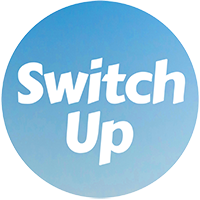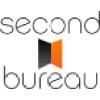Abstract:
The article emphasizes that in remote client work, pricing power is shaped less by explicit discussions of fees and more by the silent signals sent through digital interactions—such as portfolio design, email structure, language choice, and response timing. Drawing on the author's personal experiences and anecdotes from peers, it explains how small details like a polished proposal, confident yet warm messaging, and intentional pauses in communication can quietly build trust, authority, and justify higher rates before money is even mentioned. The author shares practical strategies, including using positive and assertive language, clear formatting, and pre-meeting rituals like adjusting lighting and backgrounds to boost confidence during video calls. Real-world examples illustrate how these subtle adjustments—like improving email clarity or switching to a friendlier tone—have enabled professionals to raise their rates and smooth negotiations across different cultures. Ultimately, the article shows that careful attention to digital first impressions and communication habits not only reduces the stress of pricing conversations but also gives freelancers greater control and confidence in their client relationships.
Ever feel like clients judge your rates before you can explain the value behind them? I do. Most of a client’s willingness to pay is set long before we mention money. How the portfolio looks, the words in an email, even the time it takes to reply—these details create silent expectations. I see it every time I send a proposal or join a remote call. A messy layout or timid wording can make a fair price look too high, while a tidy, confident approach turns money talk into an easy chat. The difference hides inside those first digital signals. Tiny adjustments can shift the whole conversation about value and save a bit of sanity when we reach the numbers.
How digital first impressions shape your pricing power
Portfolios and proposals build silent expectations
Picture a client browsing your portfolio for the first time. Before reading a word about your experience, they see crisp headers, balanced colors, and a layout that feels intentional. Even with no price mentioned, they already expect quality and are ready to pay more for it. When branding, language, and tiny details line up across your site and proposal, clients sense professionalism and trust. It quietly says you mean business. From dozens of client calls, I noticed polished portfolios often push budgets higher even before we talk numbers. For instance, I anchor my project price at the top tier of my value-matrix before presenting the mid-range offer, which feels reasonable by contrast.
But not every digital asset helps. Small errors can cost real money.
- Sloppy layouts with inconsistent fonts and colors
- Apologetic or uncertain language (Sorry for the delay…)
- Outdated project samples or mismatched logos
They look minor yet turn into hidden deal breakers. People form quick opinions. If something feels off, clients fear you might cut corners elsewhere. Any price you share starts to feel too high, and trust slips away.
Early in my career, I spent hours tweaking my pitch deck. I added symmetry, clearer sections, and better contrast. Price talks suddenly got easier. Clients stopped pushing back and often accepted my rate without debate. Time spent polishing visuals paid off in fewer objections and smoother talks. Of course, the deck is only part of the story. Everyday emails carry just as much weight.
Emails and messages show authority (without sounding harsh)
A simple, well-structured email with a clear subject, short paragraphs, and logical flow is painless to read and easy to trust. When messages feel organized, clients believe you know what you’re doing and become more open to higher rates. The difference is subtle yet powerful.
Tone matters too. A warm, confident voice (never cold or bossy) keeps the chat smooth. I like positive framing, soft modals (could, would), and I avoid sounding aggressive. A few tricks I lean on:
- Start with a quick thank you or friendly greeting
- Focus on solutions, not problems
- Make requests feel collaborative (Can we review by Wednesday?)
Visual clarity matters even more on mobile. I often use:
- Bullet points for key ideas
- Bold text for important actions
- Short, clear next steps
Quick checklist for digital messages:
- Clean structure (clear subject, brief intro)
- Use bullets or numbers for easy scanning
- Highlight next steps or deadlines in bold
These tweaks help clients act fast, even on the go, and turn long waits into quick replies.
Presence in remote calls for building trust and value
Picking the right moment to go live on video or voice
Sometimes endless emails hit a wall. Misunderstandings pile up or pricing feels tense. A quick video or voice call changes things. Ten minutes with a camera puts a face to the name and removes digital awkwardness. Clients relax and it becomes easier to settle scope or money.
Small tweaks for a confident and professional presence
Even small routines before a call boost confidence. I sit upright, rest my hands where they are visible, and look straight at the camera. If there is clutter behind me, I find a plain wall. Good front lighting keeps my face clear. An open posture, tidy background, and direct eye contact quietly tell clients they can trust me.
My personal ritual: simple setups, less stress
Before every meeting I adjust the webcam to eye level and check that my face is not in shadow. I choose a blank background and remove distractions. This small ritual calms my nerves and helps me focus on the person, not the screen. After it, I speak with more confidence, and discussions about scope or price feel smoother.
Timing and tempo reshape digital negotiation
Reply speed as a hidden pricing lever
A fast reply shows clients you’re reliable and paying attention. When I reduced my median response time from 6 hours to 2 hours, the average project value increased by €450. Yet if you answer every message in seconds, it can look like you have nothing else to do. I noticed that a short, planned pause—an hour or two—signals a busy schedule and nudges my perceived value upward. Balance matters. Wait too long and interest fades.
Leaving people hanging never helps. If messages start piling up, you look unreliable. I try to reply when I said I would and never let the gap get wide enough for worry. Because everything is asynchronous, I control the tempo. One short note often sets expectations: Thanks, I’ll get back to you by tomorrow.
Email and chat give room to breathe. I can reread, think, and craft an answer without awkward silence. That space cuts mistakes and keeps talks calm, especially when a topic is tricky. Sometimes slowing the pace helps both sides reach a better solution.
Nudging the flow with well-timed pauses
When a client counters my price with a tricky offer, I do not reply right away. A deliberate pause of a few hours shows I am thinking, not reacting. That distance helps the client rethink too and keeps the mood professional. If things risk dragging, I reset expectations: If you need a decision quickly, I can confirm by end of day. The process stays smooth.
Setting clear timelines is a lifesaver. When I say, I’ll review by end of day, or Let’s schedule feedback for Thursday, clients relax. They know what comes next and projects move forward. It also makes me look organized. When I steer the process, my rate feels more justified.
Working with teams across different countries and time zones, there is rarely a need to respond instantly. Everyone expects a bit of delay, which lowers stress. No late night replies, no confusion about whose turn it is. Embracing the asynchronous rhythm cuts mistakes and helps me enjoy the work.
Silent signals in digital documents and presence
Formatting creates instant trust and authority
Open an email on your phone and the first thing you notice is structure. Bold headers pop, bullet points break up dense info, and a clean layout makes even a long message easy to scan. This polish is more than decoration. It is a strong signal to clients who judge your professionalism in seconds. I keep messages crisp with short lists or bold actions because decision makers see the difference.
I once lost a project I really wanted because my proposal doc was cluttered and hard to follow. The client said it made them worry about attention to detail and reliability. That stung—especially since I knew I could deliver. It taught me that even with solid code or a clever idea, poor formatting can spoil trust and cost real opportunities.
A few formatting moves quietly lift authority and pricing power:
- Bullet points or numbers to make details stand out
- Bold key deadlines, links, or deliverables
- Extra white space so nothing feels cramped
Beyond layout, the whole structure of the document matters. Short paragraphs, clear headings, and roomy margins are small things that add up fast. When clients find documents tidy, they see you as reliable and organized. Trust grows and rates follow. A couple of clumsy formatting mistakes can chip away at all that.
Language signals value (without a fight)
Switching I recommend for maybe we could in my October proposals cut negotiation cycles from 3 rounds to 1. The wording you choose changes everything online. Simple swaps like moving from maybe we could… to I recommend… sound confident instead of apologetic. That extra certainty supports higher rates, especially when tone is easy to misread. I skip hedging phrases such as I think and use direct yet friendly language.
When I need to stress value, I start with the outcome: This approach will reduce errors and speed delivery, before mentioning a fee. It shifts attention from cost to benefit.
Even when working solo I often say we can review this or our team will deliver by Friday. Using we or our builds quick rapport with clients from different cultures. It frames me as a partner, not a vendor.
Micro tactics that boost remote pricing outcomes
The 3 Cs checklist: clarity, conciseness, courtesy
Before I send an important message—a rate proposal or a contract change—I run through a mental checklist I call the 3 Cs: Clarity, Conciseness, Courtesy.
- Clarity: Is the main point easy to spot?
- Conciseness: Am I using just enough words?
- Courtesy: Does my tone feel respectful and friendly?
This quick list helps each message build trust and justify higher rates with no confusion.
Checklists and scripts to make client talks smoother
Scripts make tricky moments less stressful. When I am behind schedule I say, Thanks for your message, I’ll reply by [date]. To show value I use, My experience with [X] can help you reach [Y]. Having these lines handy removes the worry of sounding too strong or too passive and keeps the negotiation on track.
The right tools help too. A spelling checker, quick screen-record tool, and live editing doc keep my workflow tight. These tools polish my work and save hours.
Real stories where silent signals raised the bar
When I trimmed my average email length from 220 to 140 words, my close-rate jumped from 38% to 52% in Q2 last year. One developer I know raised rates by about 20 percent by making emails and proposals shorter, clearer, and more structured. Clients accepted prices with less arguing and projects moved faster.
Another engineer switched from vague, hesitant wording to an assertive yet friendly style. Proposals with confident language and clear next steps increased contract values by roughly 15 percent while keeping clients happy.
After moving from Berlin to Lisbon, I noticed how clients in different places react to digital signals. In Portugal a tidy proposal plus a short intro call makes price talks easier even with clients from several countries. Work feels more relaxed and negotiations are less tense across cultures.
All these silent tweaks—layout, tone, timing, and a bit of personal connection—work together behind the scenes. By the time the price appears, half the work is already done.
So much of pricing power in remote work happens quietly, almost behind the scenes. Every small detail—how a proposal looks, the words chosen, even the timing of replies—shapes how clients see you and what they will pay. A tidy portfolio or a quick, confident message can turn a tense price talk into an easy one. The more care I put into these details, the less stress I feel around money and the easier it is to stand by my rates. These adjustments also help me feel more in control and better able to set real boundaries.














